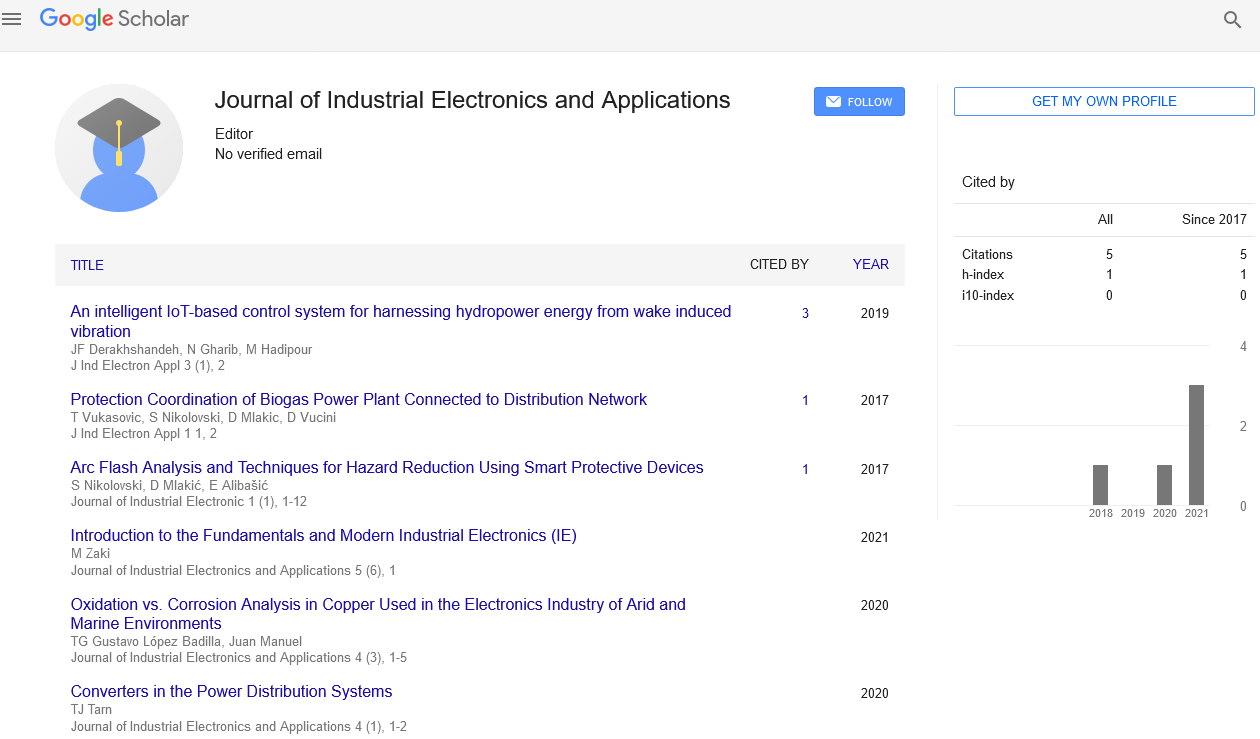Perspective, J Ind Electron Appl Vol: 5 Issue: 6
Technology Overview in Motors and Drives for Energy Savings
*,
Department of Electronic Engineering, Chaitanya Institute of Technology, Visakhapatnam, India
Corresponding Author:
Zaniab Dhubey
Department of Electronic Engineering, Chaitanya Institute of Technology, Visakhapatnam, India
E-mail: dhubeysjaoph@gmail.com
Keywords: Automotive Technology, Computational Intelligence, Control Systems and applications, Electrical Machines and Drives, Factory Automation
Description
AI-specific hardware and software are components that can enable the integration of AI and robotics. AI-based robots are finding numerous applications in military and defense, law enforcement, personal assistance and caregiving, warehouse stock management, and factory automation, and hence governments of various countries worldwide have been investing for research on AI and robotics. Robots have become smarter from collaboratively working with people in production facilities to helping the elderly with their day-today activities, robots have come a long way than just being deployed in assembly lines. The rise of AI in recent years has made this possible. The AI robots considered here refer to service and industrial robots that are integrated with AI technology [1]. â??AI in robotsâ?? refers to the specific hardware adopted for developing an AI integrated robot or robotic system. The AI integrated robots can learn a few repetitive tasks without any human intervention and can even communicate with humans or, in some cases, with other peer robots. According to our study on AI in robots, the market for these robots is expected to reach USD 12.36 billion by 2023 from USD 2.84 billion in 2017, growing at a CAGR of 28.78% from 2018 to 2023. The high adoption of robots for personal use, such as companionship and entertainment; support from governments worldwide to develop modern technologies; and financial assistance through government budgets or subsidies are some of the key factors driving the growth of AI-integrated robots. In most cases, manufacturers of robots partner with AI technology provider companies that develop essential hardware or software for their products. AI Brain (US) is one of the leading software providers for AI-based robots. Nvidia (US), advanced micro devices (US), Intel (US) and Xilinx (US) are the major AI chipset manufacturers present in the market. Processors used in AI-integrated robots include IBM Power System S822LC. It has been well recognized that AI in robots augments and amplifies human potential as well as productivity, and this is reflected in the rapid increase of investments across many companies and organizations. It is only because of AI that in manufacturing industries, robots are evolving from potentially dangerous industrial machines to smart â??Robots.â? AI is used to optimize robot accuracy and reliability.
AI Analyze of Robots
Most industrial robots come with services using AI to analyze data from robots in real-time to predict whether and when a robot is likely to require maintenance, enabling manufacturers to avoid costly machine downtimes and hence optimizes the manufacturing process. AI can improve the speed and accuracy of a robot performing applications such as, pick and place which results into process optimization and cost savings [2]. For instance, in April 2018, FANUC launched an AI based bin picking robotic system. ÐÂLS system adopts NVIDIA GPU and is based on deep learning. The deep learning algorithm allows FANUC Robot Bin Picking system to learn the picking order automatically and hence optimizes the bin picking process and also eases the process of installation resulting into cost savings. AI has continued to beat all records and overcome many challenges that were unthinkable less than a decade ago. The combination of these advances is expected to continue to reshape our understanding of robotic intelligence in many new domains [3]. Human Control over Autonomous Systems By definition, an autonomous system or function is to some degree out of human control. Nevertheless, humans can exert some control during design and development, at the point of activation for a specific task and during operation, for example by interrupting its functioning. In the context of autonomous weapon systems, the international panel on the regulation of autonomous weapons [4]. There is no universal model for optimal human-machine interaction with autonomous (robotic) systems, since the need for human control, or the level of autonomy that one can tolerate, is linked to the complexity of the environment in which the system operates and the complexity of the task it carries out [5]. Generally, the greater the complexity in either the greater the need for direct human control and less tolerance of autonomy, especially for tasks and in environments where a system failure could kill or injure people or damage property, i.e. safety-critical tasks. Use of an autonomous system in an uncontrolled, unpredictable environment carries a high risk of malfunctioning and unexpected results. Nevertheless, current technical developments in software complex control software including but not limited to AI and machine learning techniques seek to increase the level of autonomy that can be tolerated for more complex tasks in more complex environments.
 Spanish
Spanish  Chinese
Chinese  Russian
Russian  German
German  French
French  Japanese
Japanese  Portuguese
Portuguese  Hindi
Hindi 